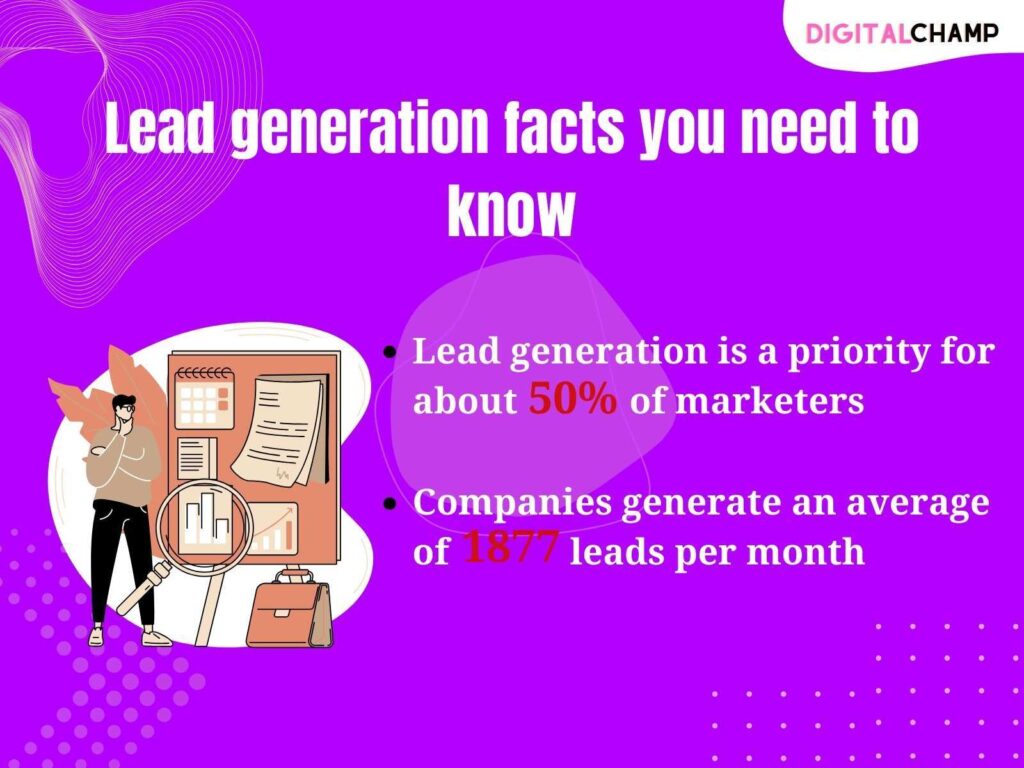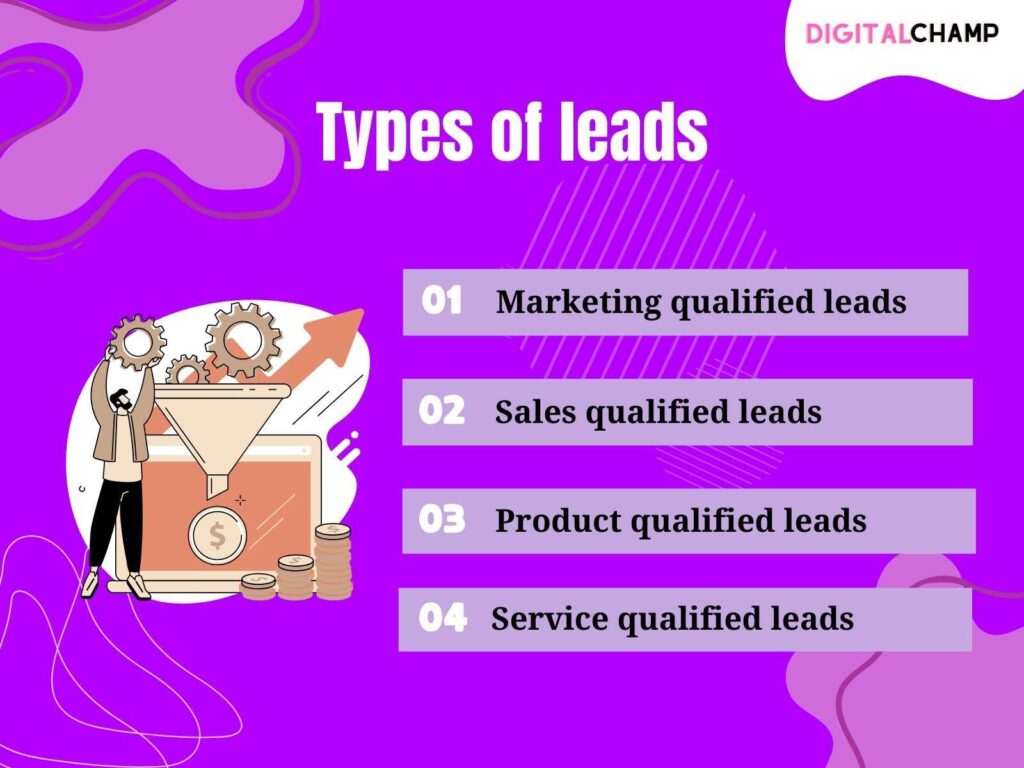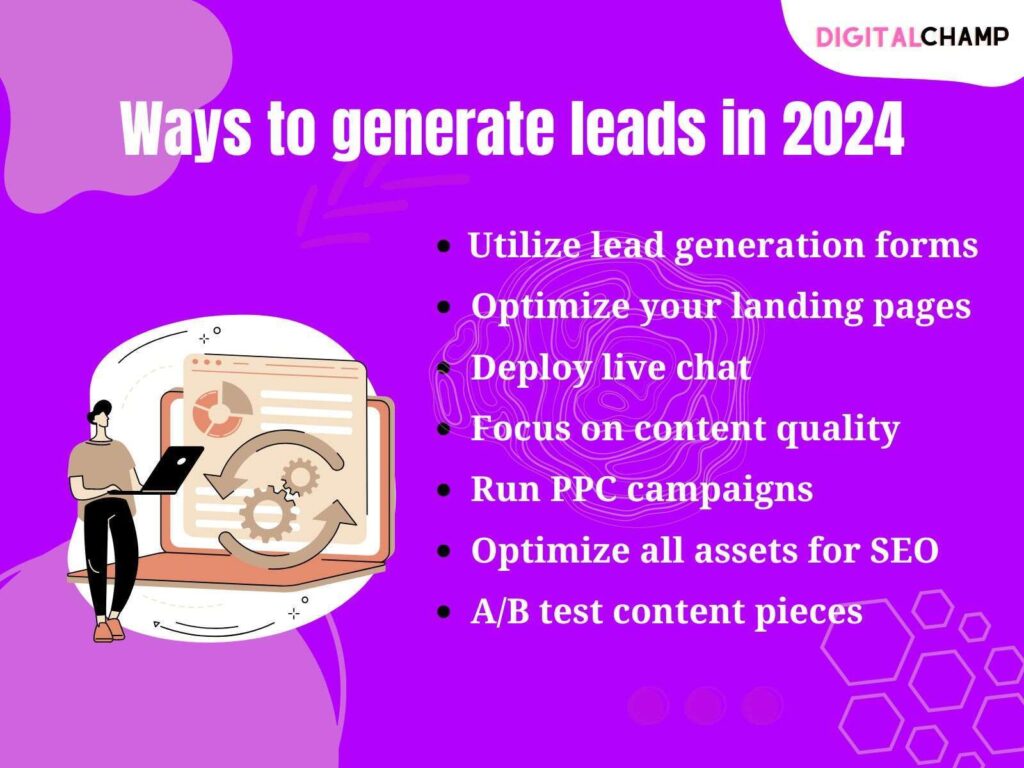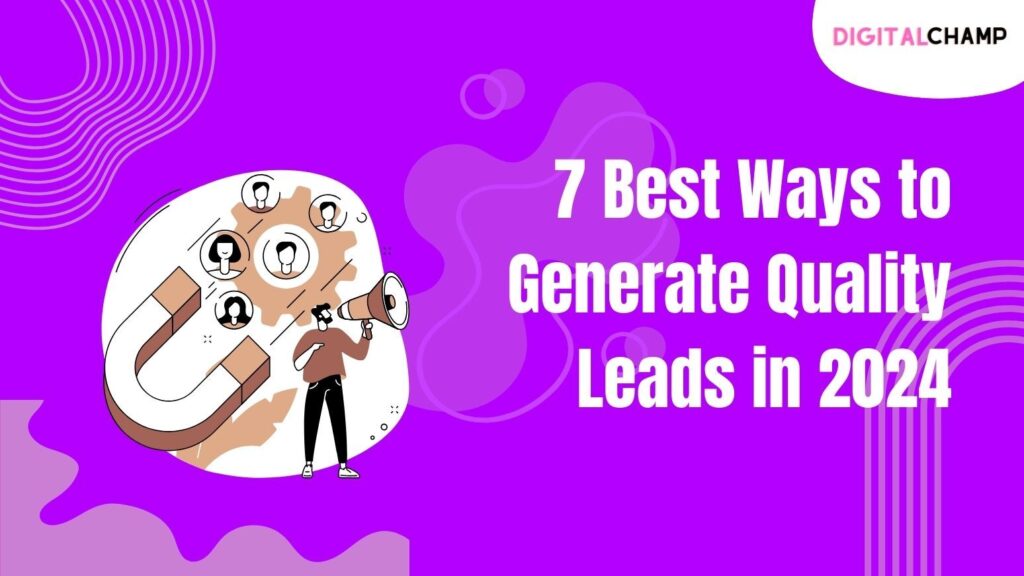Lead generation, in some cases, is the lifeline that keeps your business afloat. Marketers and other professionals love leads as much as everything else about their business. Close to 50% of marketers think that lead generation is the top priority for their businesses. In the old days, lead generation used to be manual, but now, professionals generate quality leads through online campaigns, interactions, and much more. If you’re a business owner willing to dive into lead generation and the way it works in 2024, then the following blog is just for you.
Read along as we’ll discuss what a lead is, how it is generated, and what tools you can use to generate quality leads in 2024.
What is a lead?
A lead is a person who has shown a newfound interest in your product/service. This individual is willing to share their contact information such as contact number or email ID. A marketer’s job is to identify and woo the lead as they’re the ones eventually buying your product/service. Once a lead has been thoroughly convinced, they convert into a customer. A marketer’s job then involves taking care of the said customer through offers and other deals that might interest them.

Companies generate an average of 1,877 leads every month. The process of identifying, finding, and recording a lead is known as lead generation. This process isn’t invasive and is completely legal and natural for businesses to perform. There are a plethora of ways to generate leads in the digital age. However, one should understand the most basic method of the practice as well.
In the old days, leads used to be generated via cold calls and letters sent to potential addresses. The contact numbers and addresses would be picked from a publicly available database and then used legally. In fact, before the advent of the internet, business professionals relied on word-of-mouth and door-to-door relaying of messages to people who showed an interest in their products/services. This would often involve sending people personalized letters, as back then, a hand-signed or written letter from a high-ranking business professional was considered a specialty.
Types of leads
Now that you know what a lead is, it’s time to look at the types of leads that brands use. Here are the most common types of leads used frequently:

- Marketing Qualified Leads: A Marketing Qualified Lead is the one that has shown interest in your marketing efforts. They may have attended webinars, read the whitepapers, attended a tech demo, etc. Such leads are highly likely to convert as they’ve shown interest and actively participated in your marketing events.
- Sales Qualified Leads: These types of leads are given clearance by the sales department. The process usually involves calling the lead for buying purposes. Such leads are often considered equal to an ideal customer as they show a strong intent of buying your product.
- Product Qualified Leads: Such leads may appear niche but are quite common. Leads that often use product samples fall into this category. They’re highly likely to convert into paying customers based on their usage of a product lineup. They can often be found subscribing to a brand or simply buying frequently.
- Service Qualified Leads: This category of leads comes from people who show an interest in your service model rather than the product. These leads have already engaged in sessions highlighting the nature and features of your service.
Ways to generate quality leads in 2024
In order to generate high-quality leads for your business, you need a combination of different strategies to get the best results. Let’s take a look at the best ways in which you can generate leads:

- Utilize your lead generation forms
Lead generation forms are crucial for businesses as they collect your prospect’s data. Optimizing lead generation forms for their structure and fields is crucial to generating quality leads. Why? Because your form’s structure and layout are the first things that the prospect will probably look at. For example, if you keep the two most common fields, “Name” and “Email,” you’ll keep the structure clean and short. It’ll help the visitors fill out the information and press “Submit.” It might sound very rudimentary, but generating leads through forms is very effective.
You can also separate good-quality leads from bad ones using forms. If your form contains fields like “First Name,” “Company,” “Designation,” “Work Email,” “Company Size,” etc., it might extend the form’s length and may increase its complexity, but you’ll get separate classes of leads that’ll show you whether they’re interested in your product/service or not. A deeply interested lead will fill out the form thoroughly and might even try contacting you via multiple channels.
- Optimize your lead-generation landing pages
Lead generation is, at times, simpler than it looks. All you need is a promising and well-structured landing page for it. Every website has its set of CTAs driving people to a page that usually asks them for their information. Things such as names, email IDs, and phone numbers are usually asked of people. This information is, by all means, willingly shared by the prospects, and there’s nothing illegal about it.
A landing page of this sort needs to be optimized for faster loading times and structure. Here’s what you need to take care of while developing a similar landing page:
- Clarify the value proposition: Your page must contain details pertaining to the benefits that people will get if they share their details. From a simple thank you message to a comprehensive mail detailing all the benefits of your product/service can be a great way to represent the value that your brand is giving. People need to know what they’re sharing their information for. Hence, it is imperative that your page contains a section that clearly lists the features that your customer is highly likely to get.
- Give social proof to the visitors: On your lead generation page, one most not only be greeted with a slew of fields to fill details. People should also be able to see the businesses you’ve helped grow or have partnered with. A set of genuine logos and even testimonials of previous clients will help your brand establish a sense of trust within the visitor.
- Optimize the page for mobile use: Mobile-optimized websites and pages are beyond crucial in this age. People, if interested in your product/service, will opt for a mobile-based experience because they can access it at any point in time.
3. Live chat for the win
AI-powered chatbots are the rage in today’s business domain. The ease of building, training and monitoring one has made business interactions a lot easier than before. Chatbot proliferation has been so successful that close to 73% of buyers expect websites to be equipped with an automated helping tool.
You can build a chatbot quite easily. All you have to do is subscribe or get a framework like GPT 4, Sales Manager GPT, etc. If you train your chatbot to give detailed but instant replies in simple prompts, then chances are that you’ll be able to generate quality leads quite effectively. You can train your chatbot to begin the session by asking for the prospect’s name or email. You can also make it mandatory if you feel the need to do so.
The queries your chatbot will receive will help you generate different cohorts that can be targeted through different means. You’ll have the liberty to separate high quality leads from the average and bad ones. Remember, the more conversational your AI model is, the more likely you are to generate leads.
- Quality content is a must
Content is beyond necessary and informative today. Everywhere your eyes go, they’ll more likely find a piece of content than anything else. From your mobile phone to your PCs and tablets, content assets are everywhere. This is why creating value-generating content is crucial. You might also want to create a fixed window within which the content asset has to be published, as it is crucial as well. Quality and frequency matter a lot more than you think.
Whether it is a detailed blog piece or a beautifully designed infographic, quality content is valued at all times. You can also try placing lead magnets within your content pieces. A lead magnet is a plug of sorts that diverts all the readers/visitors to a single place. Users just have to fill out a simple form in order to proceed further. You’ll often find such examples while looking up research papers and journals.
- Ads that redirect
A PPC campaign can be quite beneficial for your business website. A Pay-per-click or PPC campaign comprises ads that are published on platforms such as Facebook, Google, Instagram, and more. For every click on the ad, you pay a small sum to the publisher, as it’s their publishing ad space that you’re using.
To generate quality leads, you can simply put a Google or Facebook ad on their corresponding platforms. These ads should be well-written and designed. While it will highlight all the features of your product/service, the ad banner itself will redirect the visitor to a lead generation page with a form. Similar to the points mentioned previously, ensure that the form represents the right set of details that the visitor needs.
- SEO optimization never hurts
Search Engine Optimization refers to the usage of keywords and other techniques to highlight your page on the Google Search Engine Results Page. The higher your website/page ranks, the better. Since the first organic result is usually the closest representation of the search term, brands fight to acquire the first three positions. This involves using the right blend of useful keywords, interlinking pages, getting quality backlinks, and much more.
If your lead generation page is well-optimized for the right search term, then you’ve solved half the problem. The remaining ones include the type of links the page has and the information form itself. Hence, catering to the SEO section alone can also help you generate quality leads.
- A/B test as much as you can
An A/B test involves creating variants of a base copy or infographic and publishing them online. After a brief window, the variants are then studied for the impressions they get. The one with a better overall performance is chosen as the final copy or infographic.
You can also A/B test your lead generation landing page with different variants to the copies and CTAs. Sections that you think can be diversified can be studied for their impressions as well. This will give you an idea of the sections that need improvement and the ones that don’t. The best copy will have the ability to draw more people organically. It’ll also guide prospects to the desired CTAs that’ll lead them to lead generation forms. Therefore, you can generate quality leads quite easily by A/B testing your landing page.
Bonus tip: Call the professionals
There are many lead generation tools and techniques that’ll aid you in your quest. However, at times it might deceive you as well. With the ever-changing online landscape, you never know when the said tools might not be enough. In such instances, you need a team of professionals capable of formulating strategies and gathering leads for your business.
This is where we come in!
At Digital Champ, our aim is to highlight your business on all channels. From content marketing to lead generation, our team of talented professionals caters to all aspects of your business. If you’re struggling with lead generation, then our team will help you formulate a sound strategy, run campaigns, test copies for landing pages, and even deploy automation solutions that generate quality leads for you.
And that’s about it
Lead generation is among the most crucial aspects of running a business. With advancements in technology, the methods might differ, but the intent remains the same. Understanding your customers and those willing to become one is a great feeling, and accomplishing it through a carefully crafted strategy is even better. We hope that you read our blog and understood how to generate leads. From a well-structured landing page to A/B testing the copies, you can generate quality leads via a combination of the aforementioned points.





